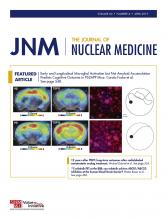TO THE EDITOR: Duncan et al., in their latest entry (1) in the ongoing debate between us, which has been permitted by the editors to continue, focus on 2 points in our previous entry (2). This permits us to focus on the same 2 points.
The first point is our assertion that “…the repair fidelity of the damage produced by low-dose, low-LET (linear energy transfer) radiation associated with medical imaging may be no less than that by homologous recombination for endogenously induced damage.” Dose, dose rate, and LET make all the difference in the world, a point that Duncan et al. continually ignore, or they continue to cite studies irrelevant to their case.
In particular, we had previously cited a study (3) showing that the fidelity of nonhomologous end joining (NHEJ) in the face of exposure to ionizing radiation is no less than that of homologous recombination (HR) as long as the dose rate, and hence the rate of damage, is low enough to permit it to do its work. Therefore, the fact that at higher dose rates NHEJ is more error-prone than HR is completely irrelevant. The only useful refutation for Duncan et al. would be for them to show that dose rate makes no difference to this putative deficiency in NHEJ repair, but they sidestep the dose rate issue by ignoring it.
They incidentally gratuitously preceded their quote of our sentence by saying, “Siegel et al. now suggest that…,” as though we had just manufactured an ad hoc reinforcement to a previously weak argument. To shore up this impression they omit the first part of our sentence, which said, “As we noted previously, …” In fact, we have repeatedly brought up the same point throughout, but Duncan et al. refuse to acknowledge or deal with it. That point is—to focus the reader’s attention on it—there is a qualitative difference between the DNA-damaging effects of low-dose ionizing radiation and those of high-dose ionizing radiation. And furthermore, that the effect of the latter is the opposite of the effect of the former: high-dose, whether low- or high-LET, contributes to causing bad health outcomes, whereas low-dose contributes to promoting better health—not on its own, but due to the biologic response it elicits. And that response consists not simply of the intranuclear process of DNA repair, whether with high or low fidelity, but also of the cellular response of apoptosis, tissue response of bystander effects, and the organismal response of immune surveillance and cleanup, as we have previously noted in our ongoing debate (4).
Duncan et al. even cite, as part of their evidence to refute us, a study by Behjati et al. (5) on second cancers in people undergoing radiation therapy. Such radiation is not low-dose and is therefore completely irrelevant to the discussion. We do not dispute the effects of such radiation, and Duncan et al. are therefore throwing darts at straw men even as they avoid the point under debate. That is, low-dose ionizing radiation is not simply less of a harmful thing, but rather is a helpful thing to our health. And this is true not just because of its desired diagnostic role in the nuclear medicine or radiology suite, but also because of its direct hormetic effect—namely, the induction of adaptive responses at all levels, from cellular to organismal. Because these radiogenically stimulated serial levels of defense also act to reduce endogenous damage—damage due to reactive oxygen species produced in the normal course of mitochondrial metabolism even in the absence of radiation exposure—exposure to low-dose ionizing radiation as encountered with medical imaging leaves most of us in a better condition than before the exposure.
This fact is supported by numerous in vitro and in vivo studies, with more coming in from around the world continually, yet Duncan et al., and many other authors who also ignore the preponderance of evidence, seem committed to “protecting” us from what is in fact a beneficial effect, apparently in the belief that they are protecting us from harm.
Their second point is trivial in comparison. In particular, they correctly assert that both mechanistic and epidemiologic studies are necessary to understand the effects of ionizing radiation, but incorrectly claim that in our previous letter (2) we had championed epidemiologic evidence alone. However, they again provide only a partial quote from that letter and thereby take our assertion out of context. True, we said, “Only epidemiologic studies…can decide the issue.” But we made this statement after explicitly demurring to dispute their particular example of mechanistic evidence. It was in that context, that we intended our sentence to be understood. In essence, we said, as an objective reading of our entire letter would confirm, that since the mechanistic evidence, whose importance we did not dispute, was insufficient to decide the issue, “only epidemiologic studies,” in addition to mechanistic studies, could cast the deciding vote.
In summary, it is vital that scientists understand that the effects on organisms of high-dose and low-dose ionizing radiation exposures are qualitatively, as well as quantitatively, different. If they cannot accept that, then it is incumbent on them to provide evidence to refute the assertion. What has tended to happen is that the very difference that is essential to the debate gets ignored in favor of citing evidence from one part of the high–low spectrum to act as evidence in the other part of the spectrum, as though there were no qualitative difference. We again assert that low-dose, as well as low-dose-rate and low-LET, ionizing radiation has a net effect, due to both physics and biology, that is beneficial to the health of the vast majority of people. Duncan et al. have provided nothing to refute this strongly evidenced fact.
Footnotes
Published online Feb. 22, 2019.
- © 2019 by the Society of Nuclear Medicine and Molecular Imaging.







